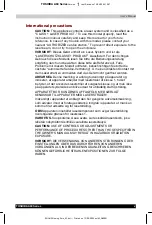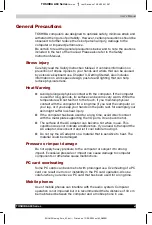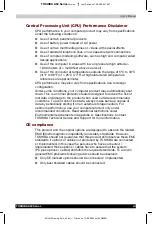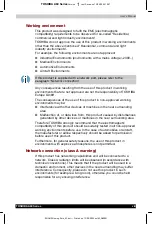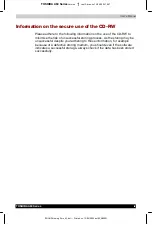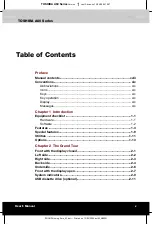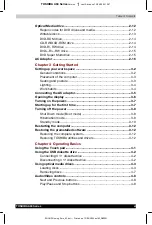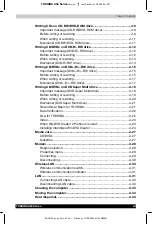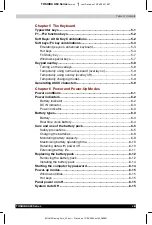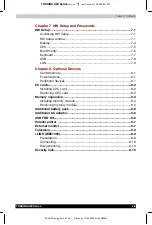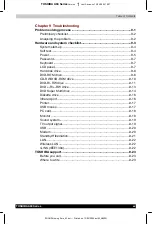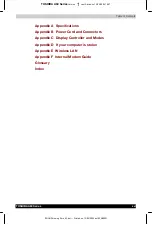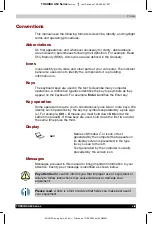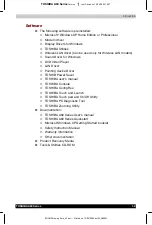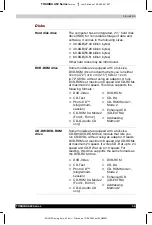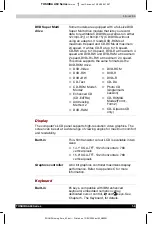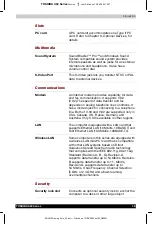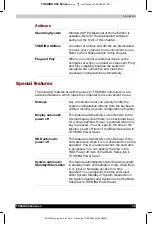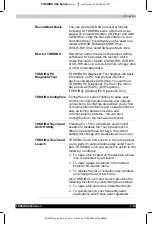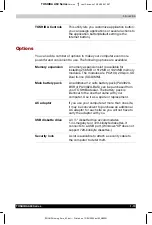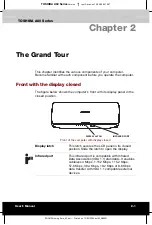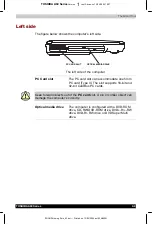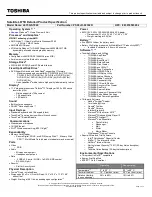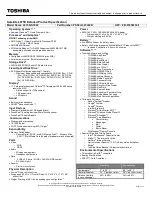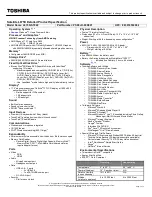
Preface
TOSHIBA A60 Series
xix
TOSHIBA A60 Series
Version
1
Last Saved on 13/05/2004 10:37
ENGLISH using Euro_M.dot –– Printed on 13/05/2004 as IM_A60EN
Conventions
This manual uses the following formats to describe, identify, and highlight
terms and operating procedures.
Abbreviations
On first appearance, and whenever necessary for clarity, abbreviations
are enclosed in parentheses following their definition. For example: Read
Only Memory (ROM). Acronyms are also defined in the Glossary.
Icons
Icons identify ports, dials, and other parts of your computer. The indicator
panel also uses icons to identify the components it is providing
information on.
Keys
The keyboard keys are used in the text to describe many computer
operations. A distinctive typeface identifies the key top symbols as they
appear on the keyboard. For example,
Enter
identifies the Enter key.
Key operation
Some operations require you to simultaneously use two or more keys. We
identify such operations by the key top symbols separated by a plus sign
(
+
). For example,
Ctrl
+
C
means you must hold down
Ctrl
and at the
same time press
C
. If three keys are used, hold down the first two and at
the same time press the third.
Display
S
ABC
Names of Windows
®
or icons or text
generated by the computer that appears on
its display screen is presented in the type
face you see to the left.
Text generated by the computer is usually
preceded by the screen icon.
Messages
Messages are used in this manual to bring important information to your
attention. Each type of message is identified as shown below.
Pay
attention!
A caution informs you that improper use of equipment or
failure to follow instructions may cause data loss or damage your
equipment.
Please
read
. A note is a hint or advice that helps you make best use of
your equipment.

